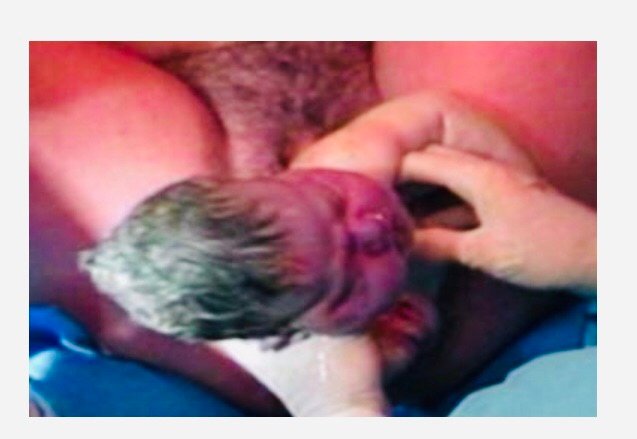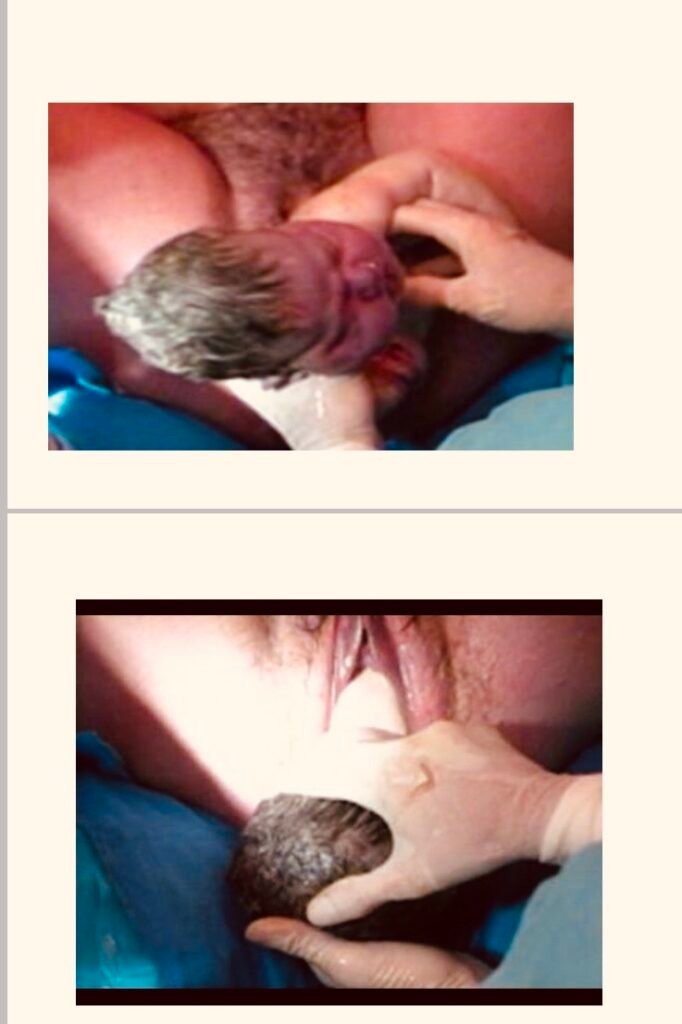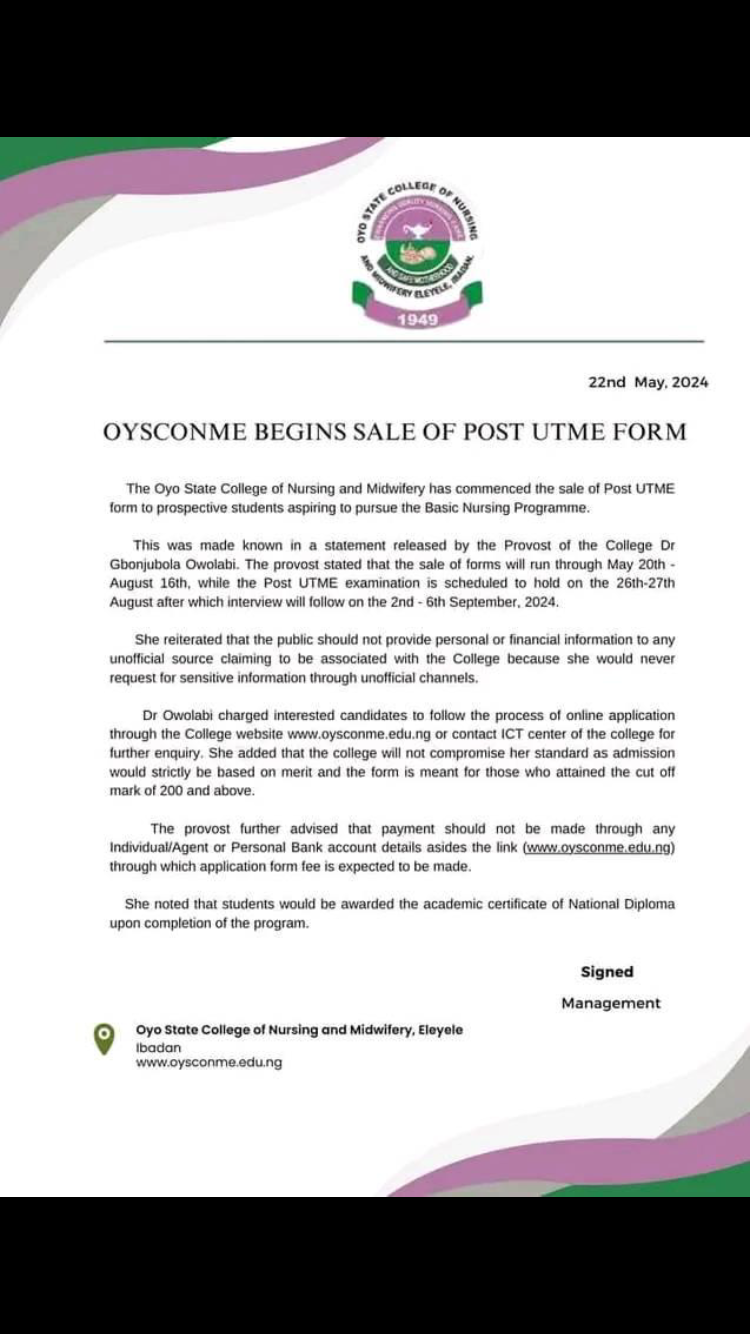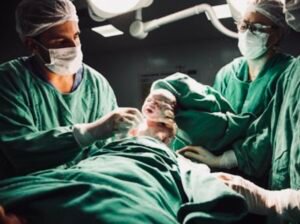Physiological Changes in the First Stage of Labour
This is the stage of dilatation of the cervix.
On average, it lasts eight to twelve hours in a primigravida and six to eight hours in a multipara.
It should not go beyond 14 hours in either.
This stage is characterized by the uterus doing an immense amount of muscular work in the form of contracting and relaxing.
Contractions are involuntary in that they do not come on through voluntary effort of the woman nor can they be voluntarily stopped.
They are peristaltic and regular.
Contractions at the start of labour come every 10 to 15 minutes and last between 30 to 45 seconds.
They increase in frequency and strength as labour progresses until they are separated by a minute or two.
Towards the end of the first stage they last for one minute. The relaxation phase during which the muscles remain retracted also shortens.
Each contraction begins with a gradual build-up towards a peak of intensity.
This is followed by a relaxation phase.
During the relaxation phase, the muscle recovers and gets ready for the next contraction.
This relaxation phase is important to both the foetus and the mother during the first and second stages of labour.
During a contraction the circulation through the uterine wall is reduced and the foetal heart rate is slowed but regains its normal rate as soon as the contraction has passed.
If there is increasing foetal tachycardia between contractions or if the bradycardia is prolonged after each contraction, then foetaldistress sets in. If the uterus contracts continuously the foetus dies from lack of oxygen (anoxia).
The mother is also able to relax during the relaxation phase.
However, if the uterus contracts continuously, the mother also gets very exhausted because the uterus uses up a lot of energy during contractions.
If this goes on for too long, as is the case during prolonged labour, her energy stores become depleted and maternal distress sets in.
As the mother will not be able to eat or absorb much by mouth, she should be given supplementary carbohydrates intravenously.
In a normal first stage, oral fluids to which additional sugar has been added are sufficient.
As the uterus contracts and retracts more and more, the upper muscular part becomes progressively thicker.
The less muscular lower segment is pulled upwards over the presenting part and becomes thinner.
The cervix becomes effaced.
The effacement is followed or accompanied by progressive dilation of the cervix until full dilatation when the uterus becomes a continuous cavity with the vagina.
A fully dilated cervix is 10 cm dilated. During the first stage the uterine cavity gets progressively smaller but the foetus moves down very little.
The cervix becomes effaced. The effacement is followed or accompanied by progressive dilation of the cervix until full dilatation when the uterus becomes a continuous cavity with the vagina.
A fully dilated cervix is 10 cm dilated. During the first stage the uterine cavity gets progressively smaller but the foetus moves down very little.
A fully dilated cervix is 10 cm dilated. During the first stage the uterine cavity gets progressively smaller but the foetus moves down very little.
The presenting part helps in dilating the cervix.
During this stage the woman should not use her voluntary efforts to bear down as this will exhaust her unnecessarily and may cause oedema of the cervix and/or foetal distress.
Management of Normal Labour in the
Admission Room
The proper management of labour is essential, if you are to avoid problems or to detect them early when they occur.
The patient will come to you believing she is in labor. You should be able to assess and decide whether she is in labour or not.
The patient may be in early labor, but often she might arrive in the late second or even third stage.
If you are sure she is not in labour send her home to wait. If she is in labour, keep her in the ward and continue monitoring her progress.
Danger, especially to the fetus, can arise suddenly and unexpectedly.
No labor should be assumed normal until the fourth stage has successfully concluded.
Admission
You would take the patient’s personal history, conduct a physical examination and carry out tests/investigations.
On admission, you should check the woman’s antenatal card for any identified risk factors.
It will also help you to see if there were any abnormalities during her pregnancy.
The records will also have information on her medical and obstetric history. If she has not been attending an antenatal.
Once this information has been established, find out more about the present labor.
Take her history, do an examination, and carry out the necessary investigations to establish the stage of labor and the state of the mother and the fetus.
History Taking
A detailed personal history should have been taken during pre-natal care.
However, if this has not been done, this is a good time to get it recorded.
Make sure the names are correctly spelled because this can eventually result in problems when registering the baby.
Review the last day of menstruation to calculate the expected date of delivery.
Check her age, parity, and contraceptive
Assuming that a detailed personal history had been taken during pre-natal care, you should now take information about the following:
➢ Any presence of show
➢Presence or absence of contractions
➢ Onset of contractions and their characteristics
➢ Activity of the foetus
➢ Rupture of the membranes
➢ Any treatment given
Head-to-Toe Physical Examination
Conduct an abdominal examination checking for:
➢Height of fundus
➢ Over-distension of the abdomen, scars or other abnormality
➢Over-distension of bladder
➢ Possible presence of twins or multiple pregnancy
➢ Contractions – frequency, length, type etc
You should also check on the presentation.
Which part of the foetus is at the pelvic brim?
Is it a head (cephalic) or the buttocks (breech)? Check the attitude; whether the head is well flexed or extended.
A well-flexed head presents the smallest diameter and delivers easily.
A deflexed head presents a larger diameter and causes delayed or obstructed labour.
Finally check the position of the relation of the foetal parts to the mother.
This is confirmed through a vaginal examination by checking the position of the foetal occiput relative to the mother.
The position of the foetal spine is the same as that of the occiput.
Vaginal Examination in Labour
This is an important examination as it can give you a lot of information, which you might not get from an abdominal examination.
On the other hand, if you do it often it is uncomfortable for the woman and you might introduce an infection into the uterine cavity, especially if the membranes have ruptured.
To avoid infections, you should scrub and put on gloves as you would for any other sterile procedure.
Then thoroughly swab the perineum of the woman with an antiseptic solution such as Savlon or Hibitane, or boiled water if these are not available.
A vaginal examination is necessary to:
Check if the patient is in labour and what stage of labour (this is done on admission of the patient)
Assess the progress of labour (this is done every four hours during the first stage of labour)
The degree of effacement and dilatation of the cervix and the station of the head relative to the ischial spines will give you the necessary information.
Remember: Do not do a vaginal examination if the mother has an antepartum hemorrhage, because if there is placenta praevia, severe hemorrhage will occur.
A vaginal examination is contraindicated if the mother has ante-partum haemorrhage unless it is performed in an operating theatre. In the case of pre-eclampsia, the procedure should be performed only after giving a sedative.
Vaginal Examination
Arrange your vaginal examination pack with cheatle forceps and pour solution.
Scrub your hands for at least five minutes.
Glove yourself methodically to prevent contamination.
Explain the semi-lithotomy position that should be maintained during the examination to the mother.
Swab the vulva and drop the swab methodically (used swabs should be decontaminated in jik before disposal).
Ask the mother to breathe in and out while you perform digital examination.
With the right hand, gently insert the fingers obliquely inside the vagina with the thumb, facing the symphysis pubis. Your left hand.
The fingers are directed along the anterior wall of the vagina. The wall should feel soft and dilatable while the vagina should be warm and moist.
The fingers are then directed upwards to the position of the cervical Os.
At times the Os is not felt readily, the fingers should then be directed backwards and upwards.
While performing a vaginal examination, you should observe the mother’s non-verbal communication.
The Vagina
The Cervix
➢ Is it bruised or oedematous?
➢Is it firm or soft?
➢ Is it taking up, that is effaced?
➢ How much is the Os dilated?
Do not insert more than two fingers in the cervical Os.
The Membranes
After deciding the state of the cervical Os, check for presence of membranes. Note the following:
Are they ruptured or intact?
If intact are they bulging?
The Cord
Is it presenting or prolapsed?
If prolapsed is it pulsating?
The Presenting Part
Next, determine the level of the presenting part. You should ask the following questions:
Is it fitting the pelvis and cervix well?
If it is the head, can you feel a suture or fontanel? Which one?
Is it well flexed?
If the head is at the brim it, will not be felt vaginally unless you push it down with your left hand which is on the mother’s abdomen
If the head has just engaged, it can be touched or just be tipped
If the head is deeply engaged, the head is felt at the level of the ischial spines.
While performing a vaginal examination, you should observe the mother’s non-verbal communication.
The Presenting Part
The station or level of the presenting part is the level to which the presenting part has descended in the pelvis.
The level of the presenting part is expressed in relation to the easily palpable ischial spines.
You can also state if it is above the brim, at the brim, in the cavity or at the outlet.
Remember that if the presenting part is at the brim then it is at station -5.
As the head descends down in to the cavity of the pelvis it decreases from -5, -4, -3, -2, -1. By the time it is at the ischial spines, it is said to be at ‘zero station’. It reappears from the pelvic outlet into the perineum, which is classified as +1, +2, +3, and +4.
By the time it is seen at the perineum it is at
To get the position right, you have to palpate the sutures and fontanel to determine their position relative to the pelvis.
This can be confirmed by abdominal examination.
In a breech or a face presentation, the reference points on the foetus are the sacrum and the chin or mentum respectively. A soft mass is felt.
Foetal genital parts or the anus may be felt with the examining finger.
The position is determined by the position of the sacrum in relation to the side of the mother’s pelvis. The left side is expressed as left sacro-anterior (LSA) or the right side, which is known as right sacro-anterior (RSA).
In a vertex presentation, when the occiput is persistently posterior, this causes prolonged labour.
In a cephalic presentation, you will feel the hard head sutures and fontanel.
Determine whether it is the anterior or posterior fontanel by its shape.
If it is the posterior fontanel, then the position is occipito-anterior.
If it is the anterior fontanel then the position is occipital-posterior.
Face presentation is important as the chin is the facial landmark.
Note how the position of the chin is related to the mother’s right thigh (RT) or left thigh (LT), side of the pelvis and the anterior and posterior position expressed as RMP (right mentoposterior). You should also note the brow or sinciputpresentation on vaginal examination (VE).
You should be able to feel the brow, frontal sutures and possibly the posterior fontanel. The extension is usually a temporary presentation, which converts to face or occiputpresentation during labour.
However, at times it persists and in such instances, a caesarean section is usually called for.
Note whether the long axis of the body of the foetus is perpendicular to that of the body of the mother.
A left acromiodorso posterior (LADP) indicates that the baby’s lower shoulder is to the mother’s left and its back is towards her back.
A compound presentation is when the hand or occasionally a foot lies alongside the head.
The Pelvis
Next, check for moulding or caput succedaneum.
What is moulding?
Moulding is when the diameters of the foetalskull are reduced in size. During labour the bones of the foetal skull tend to overlap at the sutures so that the head can easily pass through the birth canal.
During a vaginal examination this is how you should check for moulding:
In cephalic presentation, run the finger on the head feeling for the sutures
Judge the degree of moulding by feeling the amount of overlapping of skull bones
Check for caput.
The pelvis is assessed to check if it is adequate
The following factors should be checked:
- Is it roomy?
- Are the sidewalls well spaced?
- Can you touch the promontory of the sacrum easily?
- Is the pubic arch wide enough?
- After checking for moulding, direct the fingers behind the head and make an effort to reach the sacro-promontory. The palm of the hand.
With the palm facing downwards run the two fingers down along the hollow of the sacrum and determine the shape. The hollow of the sacrum should be curved.
The two fingers are then moved to where the ischial spines are located on either side of the pelvis. Run the finger along this area to determine whether or not the ischial spines are unduly prominent. Or else you can stretch your fingers to see if the spines are prominent. The ischial spines should not be prominent.
As you move the fingers with the palm facing upward, on reaching the pubic arch check if it can accommodate two fingers. The apex usually should accommodate two fingers.
Make a fist facing downwards then place the fist between the ischial tuberosities.
The Intertuberosity should accommodate four knuckles.
The Discharge
Withdraw the fingers and check if there is:
➢Any vaginal discharge
➢Any smell
➢Any liquor or meconium staining
➢Any bleeding
The following steps should be taken as part of your investigation:
- Take a urine sample for albumin and sugar
- Check for acetone, especially if the patient is in prolonged labour
- Take blood for haemoglobin and cross matching if the patient is anaemic or might need an operation
By this time you will have gathered enough information as to the stage of labour and whether the patient belongs to the ‘at risk’ category and needs referral or not.
Read more












